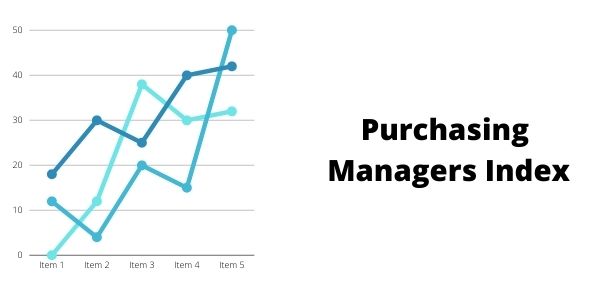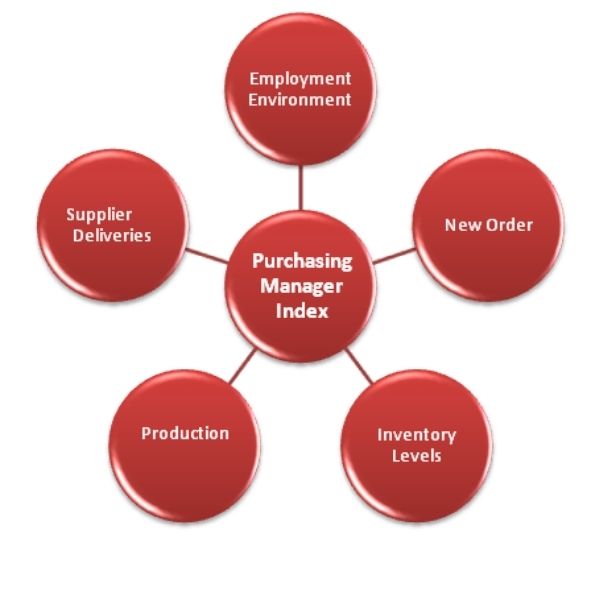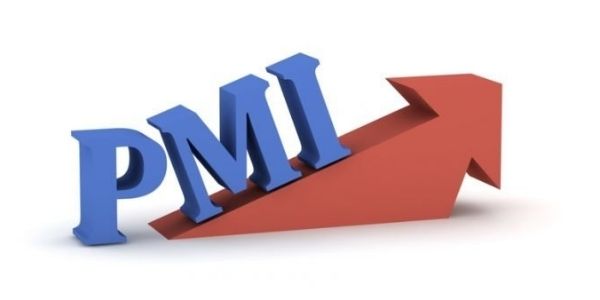In this article, let us understand the new concept called the Purchasing Managers Index. Understanding this concept is vital concerning the IAS exam. Further, covering the entire syllabus of the exam is essential for the best results. Know PMI’s full form, index, meaning, and manufacturing PMI details from the article. If you think why this concept is vital for the IAS exam? As a part of the IAS exam GS papers, one must understand all these concepts for better details, and In addition, we have added the necessary information that will help you with the UPSC exam preparations. So, let us begin and learn all points related to the PMI meaning and manufacturing PMI.

Introduction
To begin with, Purchasing Managers Index is an indicator derived from monthly surveys of private sector companies. Further, it aims to provide you with information regarding the current and future conditions of a business to the company’s decision-makers, analysts, and investors. It is calculated multiple times for the producing and services sectors, so a composite index is built.
PMI plays a significant role in providing valuable insights economic activity of a business to the decision-makers, market analysts, and investors.
Purchasing Managers Index
Further, PMI is generated by the three organizations
- Institute for Supply Management (ISM) – It was established in 1915, Headquartered in Arizona, USA. Originated the manufacturing and non-manufacturing metrics.
- Singapore Institute of Purchasing and Materials Management (SIPMM) – It was established in 1972, Located in Singapore. It produces the Singapore PMI and the Markit Group, which have metrics based on ISM’s work for over 30 countries worldwide.
- IHS Markit Group – Located in London. IHS was established in 1959, and Markit merged with IHS in 2016.
ISM, SIPMM, and Markit Group individually compile purchasing managers’ index surveys every month. Further, all ISM’s surveys cover all NAICS categories. SIPMM survey covers all manufacturing sectors. The Markit survey includes private sector companies but not the public sector. Further, the ISM began to produce the report for the United States in 1948.
How does it work?
The value of PMI depends on the survey that is conducted monthly and is sent to the senior executives of more than 400 companies under 19 primary industries that are weighted by their contribution to U.S. GDP. Further, it depends on the five major areas they are.
- Employment
- New orders
- Production
- Inventory levels
- Supplier deliveries
Calculation of Purchasing Managers Index
Further, the PMI is as
PMI = (P1 * 1) + (P2 * 0.5)
where:
- P1 = It indicates the Percentage number of answers that reported an improvement.
- P2 = It indicates the Percentage number of answers that reported no change.
Based on the above points, one can say that.
- If 100% of the panel reported an improvement, the index is 100.0.
- If 100% says a deterioration, the index would be zero.
- Lastly, if 100% of the panel saw no change, the index would be 50.0 (P2 * 0.5).
Further, a reading index of 50.0 means that the variable is unchanged, a number over 50.0 indicates an improvement. Then, anything below 50.0 suggests a decline. Further, an index of 50.0 would arise if either all respondents reported no difference or change. Or the number of respondents saying an improvement was matched by the number of respondents reporting a deterioration.

Quick Points
- PMI above 50 says an expansion when compared to the previous month;
- PMI under 50 says a contraction, and
- A reading at 50 indicates no change.
Headline Manufacturing PMI
Further, the manufacturing PMI is a composition of five of the indices. They are
- New Orders
- Output
- Employment
- Suppliers’ Delivery Times
- Stocks of Purchases
Later, each of these variables the same weighting when calculating the overall PMI, whereas Markit uses the following weights:
- Production (0.25),
- New orders (0.30),
- Employment (0.20),
- Supplier deliveries (0.15), and
- Inventories (0.10).
Role in Economy
Now let us know how PMI plays a major in the economy. It is an essential tool in decision-making for both the manager and the suppliers. In addition, it gives you details on the current and future conditions of a business to the decision-makers, investors, and analysts of the company. For example, any manufacturing company makes production decisions based on the new orders it expects from customers in future months.
In addition, details provided by the PMI on supply and demand may affect the prices charged by the suppliers. Further, the suppliers follow the PMI values of a particular company to estimate the amount of future demand for the desired products. Also, the purchasing manager’s index allows the supplier to know how much inventory its customers have on hand and, as a result.
In addition, investors also make their decisions based on the PMI index. Also, the investors use purchasing managers’ Indexes as a leading indicator of economic condition. With the trend, PMI tends to precede changes in the direction in significant estimates of economic activity and output, GDP, Industrial Production, and Employment.

Markit Economics’ PMI surveys
Further, concerning Markit Economics’ PMI surveys, all data for the index is collected through the survey of 400 purchasing managers in the manufacturing sector in five different fields. They are new orders from customers, speed of supplier deliveries, inventories, order backlogs, and employment levels.
How does Purchasing Managers Index help investors with decisions?
As we have mentioned, based on the PMI values, one can make various decisions by understanding changes in the trend in significant economic activity and output estimates, such as the GDP, Industrial Production, and Employment.
Survey Panels
Further, the Purchasing Managers form a near-ideal survey sample base, having access to information often denied to many other managers. In every country, a panel of purchasing managers is carefully selected by Markit. Further, value-added data are used at the two-digit SIC level, with a further breakdown by company size analysis where possible. Then, the weighting system is also incorporated into the survey database that weights each response by company size.
Overview of the IAS Exam Preparations
We will give you an overview of the IAS exam procedure. One must visit the official site of the UPSC and know the requirements. Then, gather all documents and apply for the exam. Further, understand the exam pattern and the syllabus of the paper. In the IAS exam, there are three rounds. There are two papers in the first round, and in the second round, there are nine papers, including optional papers. Once you clear the second round, the last round is the interview round. Further, many platforms will also help you with the UPSC exam, and one must go through the previous year’s papers that will help you. We wish you good luck with your exams, prepare well. Make the best use of time and give time to all subjects.
Last Words – Purchasing Managers Index
The above article will help you by providing all details on the PMI’s full form, meaning, and other important details. Further, know why PMI meaning is important for manufacturers, suppliers, and for investors. Further, PMI surveys are that they ask only for factual information. The article will give you all information on how to calculate PMI values and how one can make decisions based on the PMI values. Further, get all information related to the IAS exam and IAS exam study materials here. We have covered all the essential information. Know More. It will assist you with the exam.

FAQs – Purchasing Managers Index
Go through the below FAQs for more details on the meaning of the Purchasing Managers Index (PMI).
IHS Markit produces the PMI for India. The IHS Markit India Manufacturing Purchasing Managers’ Index measures the performance of India’s manufacturing sector.
A purchasing managers index (PMI) is an economic indicator comprised of monthly reports and surveys from private sector manufacturing firms.
IHS Markit compiles the PMI from responses to questionnaires sent to purchasing managers in a panel of around 400 manufacturers, based on company workforce size based on contributions to GDP.
PMI full form is Purchasing Managers Index
Know the exam pattern, syllabus, books, and sources for any exam. Further, make a timetable and give time for all subjects.
Editor’s Note | Purchasing Managers Index
In summary, get all information related to the PMI meaning, full form, functions, calculation, and other details. We have added all the important information concerning the IAS exam. For example, we have added how PMI affects economic decisions and helps suppliers, investors, etc. Further, to clear the IAS exam, one must work hard and put in all efforts. In our previous article, we covered all essential topics that are vital for the IAS exam, and you can find the links above in the article. Before applying for the exam, one must completely understand all exam requirements. Even though there is a huge competition, there are lakhs of students who apply for the exam. So, this job is one of the respected jobs in India. All the best for the exams.






